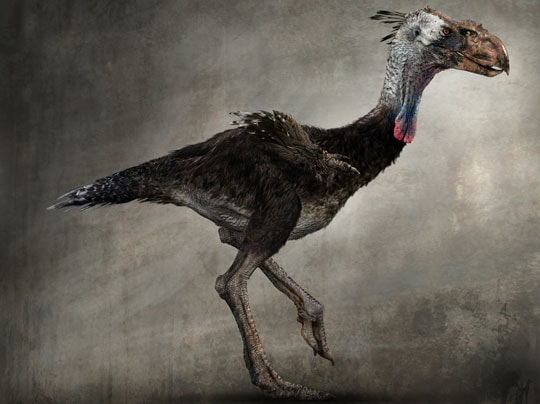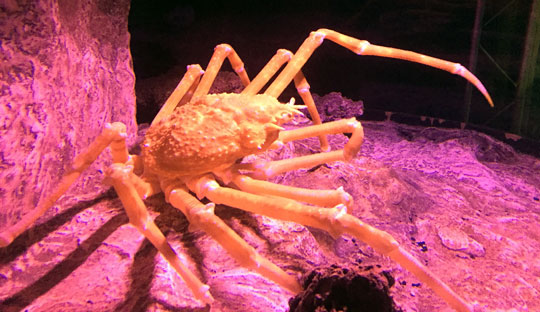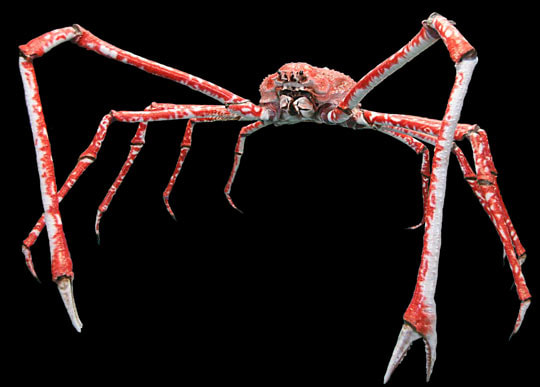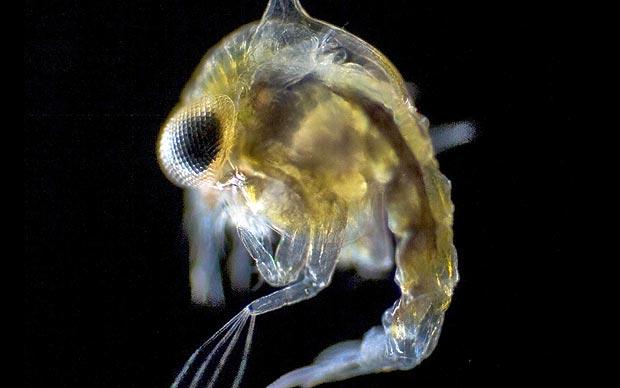|
The first book in my new series, Bridgers, will be released soon, so today's Awesome Animal comes from this book (sort of). I don't want to provide spoilers, so I'll just say that our heroes bridge to a world where they encounter some unusual birds. A lot of unusual birds. These are birds that don't exist, and never have existed, on our own version of Earth. But, there are a few extinct birds that lived on our version of Earth that are somewhat close. Including the Terror Bird. So what the heck is a Terror Bird? These were large flightless birds that lived in South America (and a few of them moved up into North America) between 62 million years ago and 15,000 years ago (although some evidence suggests they only survived until 1.8 million years ago). They were huge, fast, and vicious predators. We have found evidence of about 25 species of terror birds. Amazing facts about Terror Birds Terror birds were big! They ranged in size from 3.3 to 9.8 feet (1 to 3 meters) tall. It is thought that the larger ones weighed at least 330 pounds (150 kg). In fact, the largest bird skull that has ever been found was a terror bird skull, 28 inches (71 cm) long, with a wicked-looking predator beak that was 18 inches (46 cm) long. Terror bird is an appropriate name for these creatures. They must have struck terror into the mammals that they preyed on. They had clawed wings that were more like arms. They had huge talons (hind feet) that were probably very powerful. They almost definitely grabbed their prey in with their huge beaks, but CT scans of their skulls indicate that they couldn't swing their prey side to side with much force. They had much more power in their up and down motion, and therefore it is thought that they killed their prey by grabbing the creatures in their massive jaws and bashing them into the ground repeatedly until they were dead. Today, seriemas, roadrunners, and secretary birds still practice this feeding technique. And they were fast. Based on the birds' size and the structure of their bones, scientists believe they could run at least 35 miles per hour (56 km/h). It is possible that these birds sometimes ate large mammals, but most likely they commonly ate rabbit-sized creatures that were easier and less dangerous to kill. Check out this fun Discovery Channel video about terror birds. Scientists are pretty sure there is a descendant of terror birds still living today. It is called the Seriema. There are two species, and they live in South America (where most of the terror birds once lived). They stand a little less than a meter tall (35 inches). They can fly for short distances, but they typically hunt while running. They even escape predators by running, and they can run fast. Like their terror bird ancestors did, they chase down prey, such as insects, lizards, snakes, frogs, birds, and rodents. See photo below. So, the terror bird deserves a place in the U.A.H.O.F. (Unreal Animal Hall of Fame). FUN FACT: The word unreal was first used in about 1600. It originally meant not real, imaginary, or fanciful. But much more recently, particularly in North America, it began to be used with a meaning more like amazing or wonderful (as in, "This pasta salad is unreal!"). So it is another way to say awesome! Photo Credits:
Terror Bird digital portrait - Darin Horley/ArtStation Terror Bird skull - Scientific American, February 1994 Terror Bird chasing early horse - © 2001 Dorling Kindersley Sireima - Wikipedia
3 Comments
Usually, I feature animals that make appearances in my novels. But this is a creature I want to tell you about simply because I saw one recently and thought it was impressive. Last summer, Trish and I visited the Sea Life Aquarium in Kansas City. As we walked through a darkened area featuring invertebrates, we came across a Japanese spider crab. This creature had a leg span of at least ten feet! I took a few photos (see the first photo below) and knew I would eventually need to tell you about it. So what the heck is a Japanese spider crab? The Japanese spider crab has the largest leg span of all of the arthropods (Arthropoda is the phylum that includes insects, spiders, crabs, lobsters, and other multi-legged creatures with exoskeletons). Japanese spider crabs live in the Pacific Ocean in the waters off the coast of the southern portion of Japan. Amazing facts about Japanese Spider Crabs These crabs are big! Japanese spider crabs can have a leg span of up to 14 feet (4.3 meters). That seems almost beyond belief, but you must realize that they have extremely long legs, so their size is mostly legs. Even so, the body is also impressive. The carapace can be up to 16 inches (40 cm) in diameter. The entire crab body and legs can weight up to 44 pounds (20 kg). Japanese spider crabs live a long time. Well, actually, most crabs live quite a long time to begin with. You know those little hermit crabs you can buy in pet shops? Those critters can live sixty years! The Japanese spider crab is often reported to live 100 years, although I have had a hard time finding absolute proof of this, so perhaps it is only conjecture. But it certainly is possible, considering the creature's size and the long life of many other crabs. They eat just about anything. Japanese spider crabs occassionally catch live prey, including mollusks and slow-moving invertebrates. But they seem to prefer dead creatures (they are scavengers), and their two long, powerful feeding claws can rip up just about any dead carcass they find on the ocean floor. Old mariner legends described these giant crabs dragging sailors into the water, drowning them, and then feeding on their bodies. Not true, of course, but these crabs certainly wouldn't hesitate to feast on the body of a sailor who has already drowned. They generally live in deep water (150 to 300 meters down). But once per year, when they mate, they migrate into shallower water (about 50 meters). This is where their larvae hatch. Speaking of their larvae... in spite of the enormous size of the adult crabs, spider crab larvae are tiny and float around as plankton. In fact, if you've ever gone swimming off the coast of Japan, you have probably brushed up against thousands of Japanese spider crabs without even knowing it. The tiny larvae are extremely abundant. Why? Because females lay over a million eggs! See the spider crab larva below. Unfortunately, Japanese spider crab numbers have dwindled in recent years due to overfishing. These unusual crabs are considered a delicacy. In Japan, fishermen are now prohibited from catching them during the breeding season, from January to April. Hopefully this will help increase the population. Like other arthropods, Japanese spider crabs grow by periodically molting their exoskeleton, which is actually an amazing thing to watch. Check out this time-lapse video of a molting spider crab So, the Japanese spider crab deserves a place in the T.A.H.O.F. (Trill Animal Hall of Fame). FUN FACT: The word trill is an amalgamation of the words "true" and "real." It is used mostly in the hip-hop community to describe someone who is successful and widely-respected. So basically, it is kinda, sorta another way to say awesome! Photo Credits:
First spider crab photo - Stan C. Smith Man in tank with spider crab - KidsDiscover Spider Crab on Black Background - Wikimedia Commons Spider Crab Larvae - ScienceBlogs Cooking Spider Crabs - Pinterest |
Stan's Cogitations
Everyone needs a creative outlet. That's why I write. Archives
July 2024
|










 RSS Feed
RSS Feed